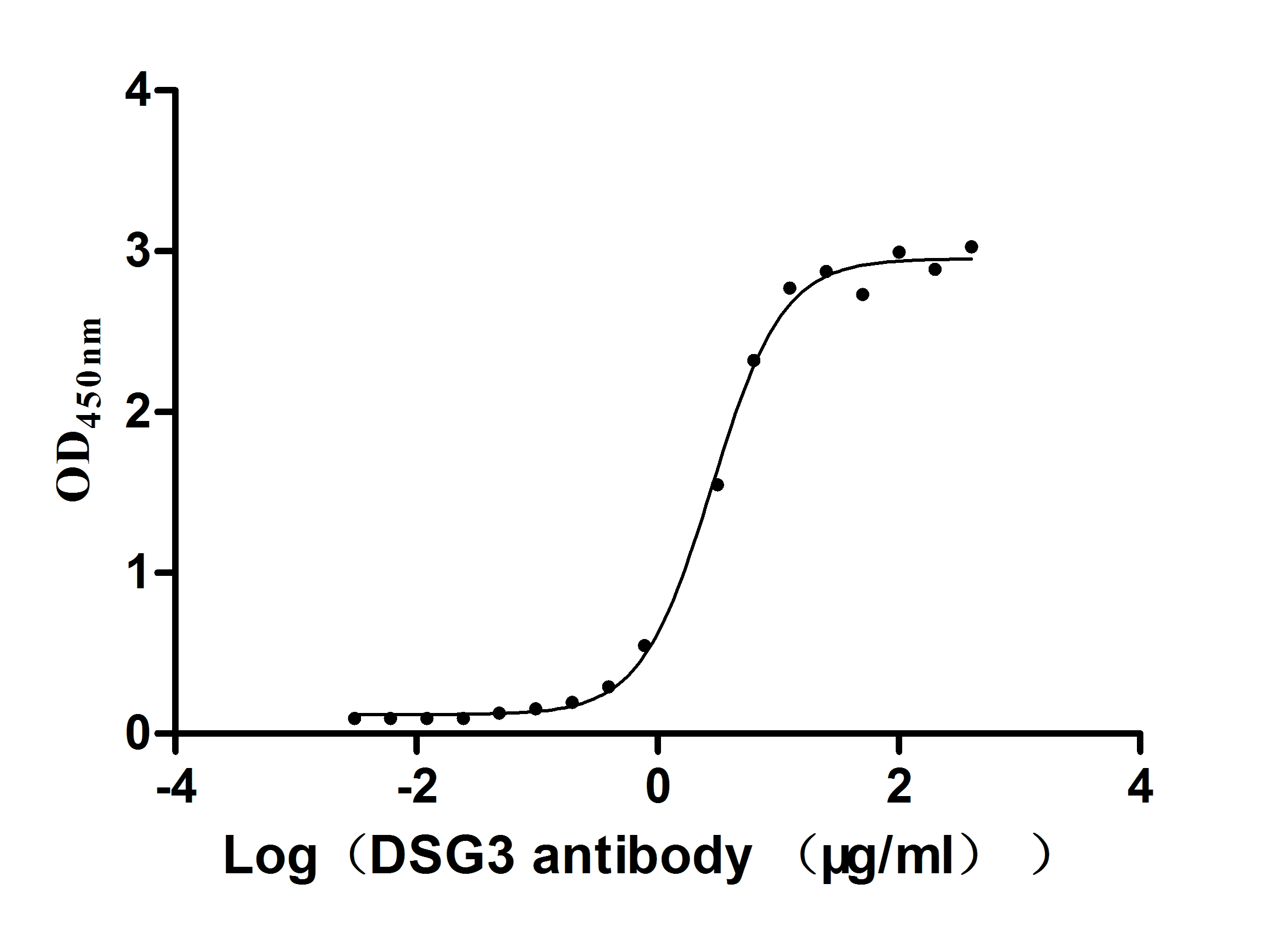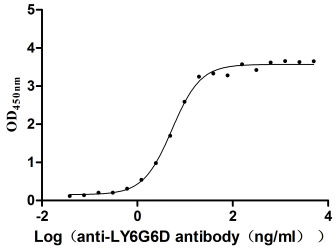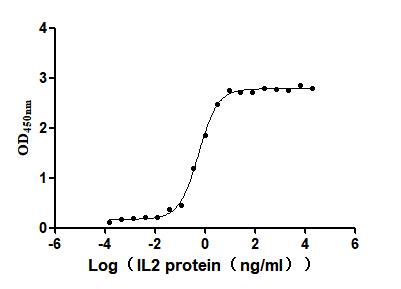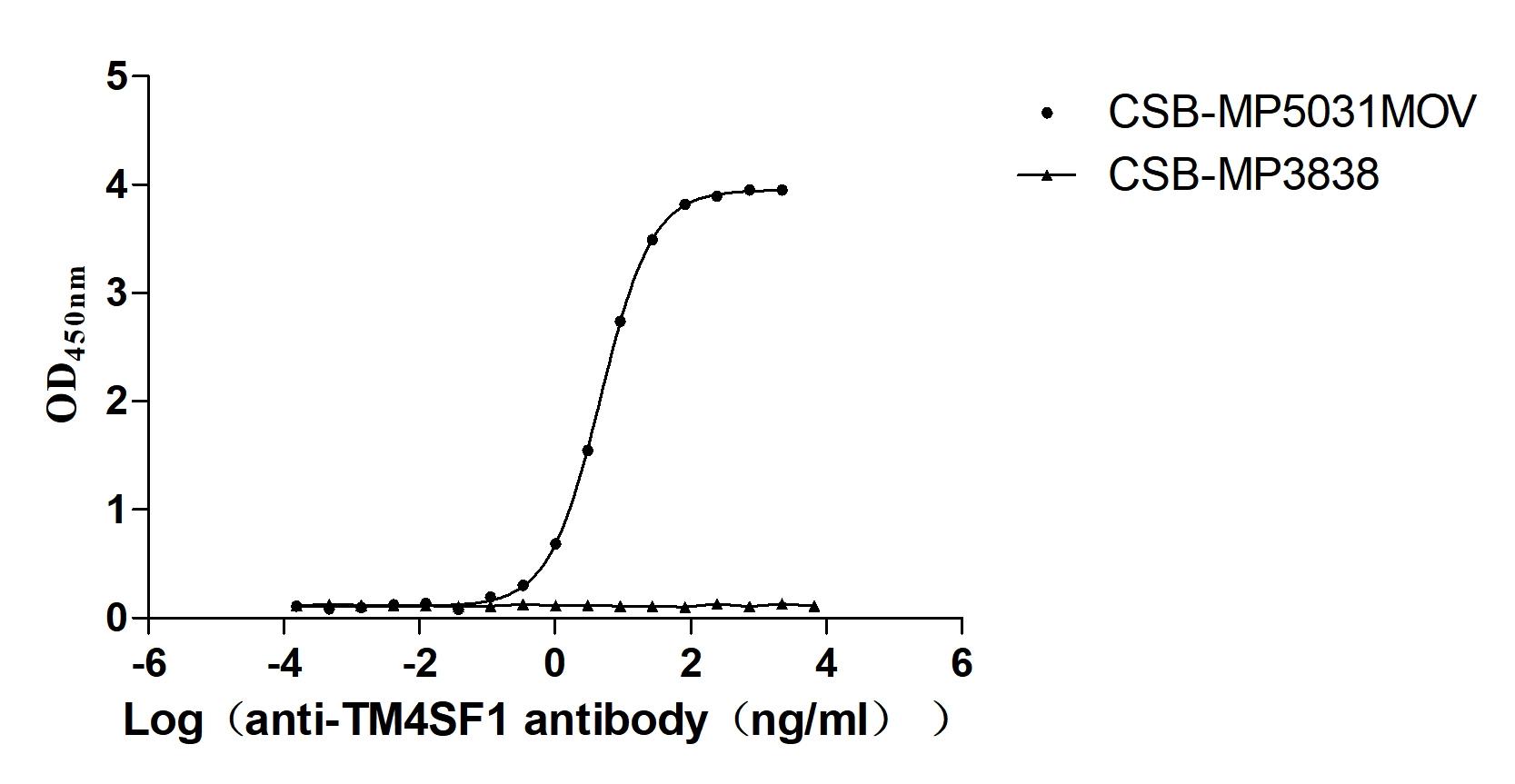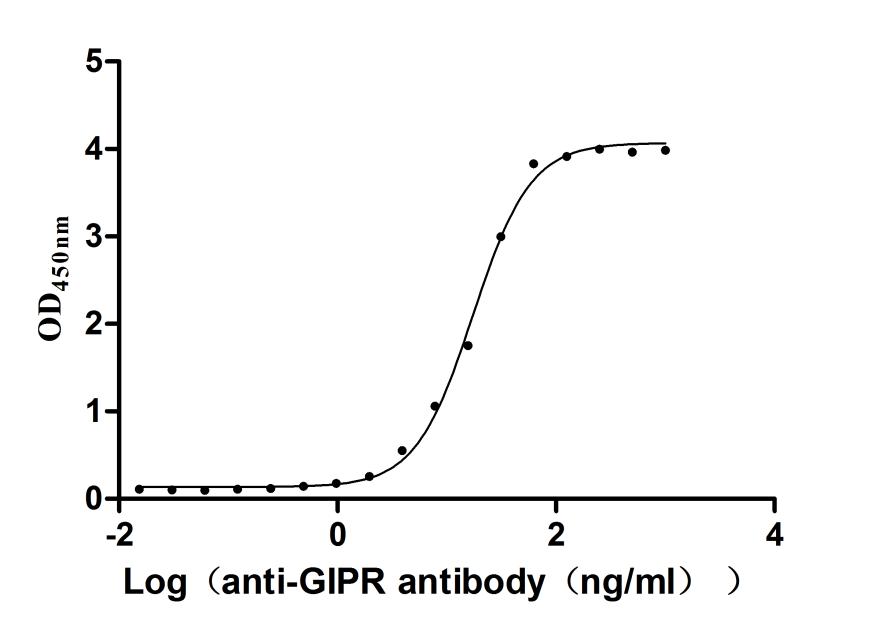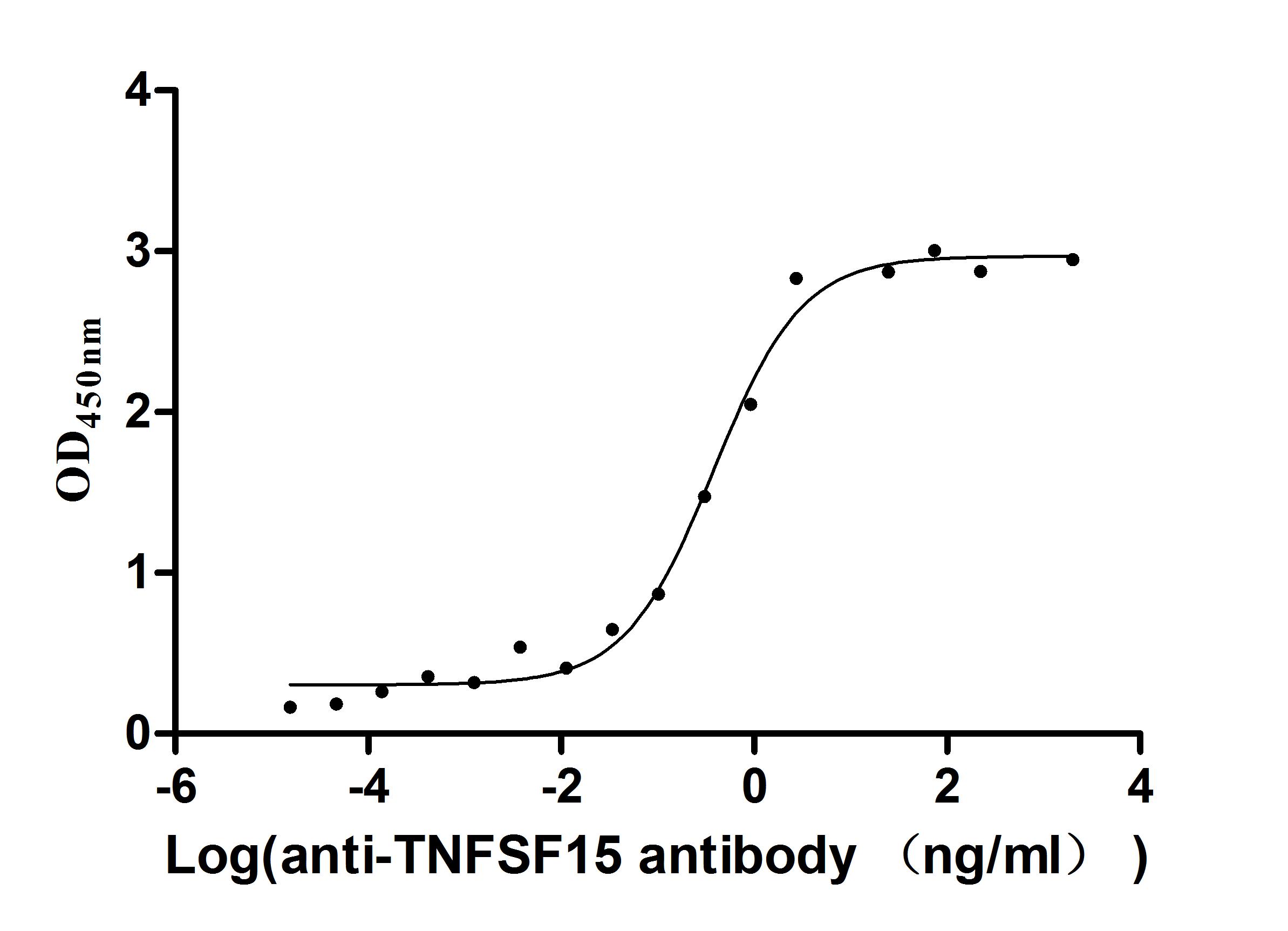Recombinant Mouse Harmonin (Ush1c), partial
-
中文名稱:小鼠Ush1c重組蛋白
-
貨號:CSB-EP875361MO-B
-
說明書:
-
規(guī)格:
-
來源:E.coli
-
共軛:Avi-tag Biotinylated
E. coli biotin ligase (BirA) is highly specific in covalently attaching biotin to the 15 amino acid AviTag peptide. This recombinant protein was biotinylated in vivo by AviTag-BirA technology, which method is BriA catalyzes amide linkage between the biotin and the specific lysine of the AviTag.
-
其他:
產(chǎn)品詳情
-
純度:>85% (SDS-PAGE)
-
基因名:Ush1c
-
Uniprot No.:
-
別名:Ush1c; Harmonin; PDZ domain-containing protein; Usher syndrome type-1C protein homolog
-
種屬:Mus musculus (Mouse)
-
蛋白長度:Partial
-
蛋白標(biāo)簽:Tag?type?will?be?determined?during?the?manufacturing?process.
The tag type will be determined during production process. If you have specified tag type, please tell us and we will develop the specified tag preferentially. -
產(chǎn)品提供形式:Lyophilized powder
Note: We will preferentially ship the format that we have in stock, however, if you have any special requirement for the format, please remark your requirement when placing the order, we will prepare according to your demand. -
復(fù)溶:We recommend that this vial be briefly centrifuged prior to opening to bring the contents to the bottom. Please reconstitute protein in deionized sterile water to a concentration of 0.1-1.0 mg/mL.We recommend to add 5-50% of glycerol (final concentration) and aliquot for long-term storage at -20℃/-80℃. Our default final concentration of glycerol is 50%. Customers could use it as reference.
-
儲存條件:Store at -20°C/-80°C upon receipt, aliquoting is necessary for mutiple use. Avoid repeated freeze-thaw cycles.
-
保質(zhì)期:The shelf life is related to many factors, storage state, buffer ingredients, storage temperature and the stability of the protein itself.
Generally, the shelf life of liquid form is 6 months at -20°C/-80°C. The shelf life of lyophilized form is 12 months at -20°C/-80°C. -
貨期:Delivery time may differ from different purchasing way or location, please kindly consult your local distributors for specific delivery time.Note: All of our proteins are default shipped with normal blue ice packs, if you request to ship with dry ice, please communicate with us in advance and extra fees will be charged.
-
注意事項(xiàng):Repeated freezing and thawing is not recommended. Store working aliquots at 4°C for up to one week.
-
Datasheet :Please contact us to get it.
靶點(diǎn)詳情
-
功能:Anchoring/scaffolding protein that is a part of the functional network formed by USH1C, USH1G, CDH23 and MYO7A that mediates mechanotransduction in cochlear hair cells. Required for normal development and maintenance of cochlear hair cell bundles. As part of the intermicrovillar adhesion complex/IMAC plays a role in brush border differentiation, controlling microvilli organization and length. Probably plays a central regulatory role in the assembly of the complex, recruiting CDHR2, CDHR5 and MYO7B to the microvilli tips.
-
基因功能參考文獻(xiàn):
- under normal housing conditions, Ush1g(-/-) and Ush1c(-/-) albino mice have dysfunctional cone photoreceptors whereas pigmented knockout animals have normal photoreceptors. PMID: 29386551
- Harmonin enhances voltage-dependent facilitation of Cav1.3 channels and synchronous exocytosis in mouse inner hair cells. PMID: 23613530
- MYO7A, USH1G (Sans) and CDH23 form the upper tip-link complex in adult mice, likely in combination with USH1C (harmonin). PMID: 22381527
- examine the effects of null mutation of the Ush1c gene on subcellular localization of Myo7a, Pcdh15 and Sans in the inner ear PMID: 21156003
- Cadherin-23, myosin VIIa and harmonin form a ternary complex and interact with phospholipids. PMID: 20639393
- The fact that Ush1c expression is much higher in the ear than in the eye suggests a different role for Ush1c in ear function than in the eye and may explain why Ush1c mutant mice do not recapitulate vision defects. PMID: 20211154
- forms a complex with cadherin 23 by means of PDZ-domain interactions PMID: 12407180
- the shaping of the hair bundle relies on a functional unit composed of myosin VIIa, harmonin b and cadherin 23 that is essential to ensure the cohesion of the stereocilia PMID: 12485990
- Rac-DOCK4-actin-binding protein harmonin-activated signaling pathway is possibly involved in regulating actin cytoskeleton organization in stereocilia of the inner ear. PMID: 16464467
- Homozygous Ush1c216A (216AA) mice are hyperactive, display circling and head tossing behavior, and do not have a Preyer reflex at 21-25 days old. PMID: 17174357
- harmonin is a upper tip-link density component and contributes to establishing the sensitivity of mechanotransduction channels to displacement. PMID: 19447093
- harmonin-b operates as an intracellular link that limits adaptation and engages adaptation motors PMID: 19756723
顯示更多
收起更多
-
亞細(xì)胞定位:Cytoplasm, cytosol. Cytoplasm, cytoskeleton. Cell projection, microvillus.
-
組織特異性:Detected in stereocilia of cochlear hair cells (at protein level). Isoform 1 is expressed in the eye, cochlea, vestibule, heart, kidney, small intestine and testis; it is barely visible in skeletal muscle, liver, and lung and is absent from the brain. Iso
-
數(shù)據(jù)庫鏈接:
Most popular with customers
-
Recombinant Mouse Desmoglein-3 (Dsg3), partial (Active)
Express system: Mammalian cell
Species: Mus musculus (Mouse)
-
Recombinant Human G-protein coupled receptor family C group 5 member D (GPRC5D)-VLPs (Active)
Express system: Mammalian cell
Species: Homo sapiens (Human)
-
Recombinant Macaca fascicularis lymphocyte antigen 6 family member G6D (LY6G6D) (Active)
Express system: Yeast
Species: Macaca fascicularis (Crab-eating macaque) (Cynomolgus monkey)
-
Recombinant Human Desmoglein-2 (DSG2), partial (Active)
Express system: Mammalian cell
Species: Homo sapiens (Human)
-
Recombinant Human Interleukin-2 (IL2) (Active)
Express system: Mammalian cell
Species: Homo sapiens (Human)
-
Recombinant Macaca fascicularis Transmembrane 4 L6 family member 1 (TM4SF1)-VLPs (Active)
Express system: Mammalian cell
Species: Macaca fascicularis (Crab-eating macaque) (Cynomolgus monkey)
-
Recombinant Human Gastric inhibitory polypeptide receptor(GIPR),partial (Active)
Express system: Mammalian cell
Species: Homo sapiens (Human)
-
Express system: Mammalian cell
Species: Homo sapiens (Human)


